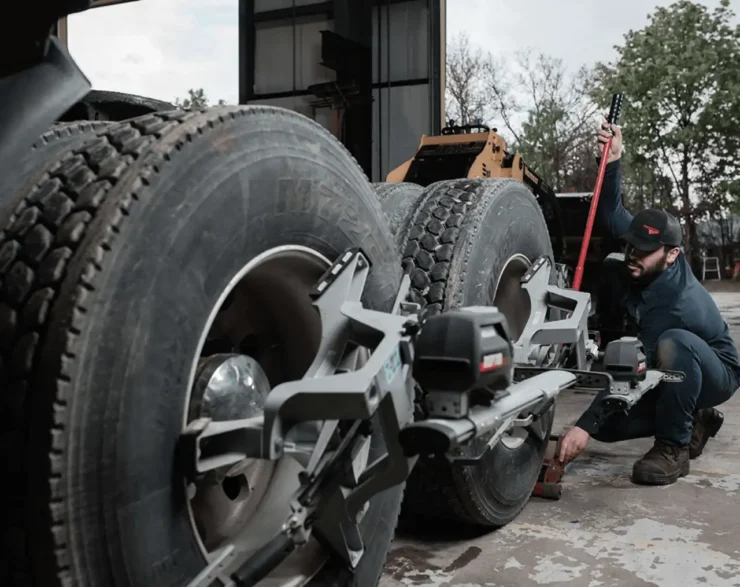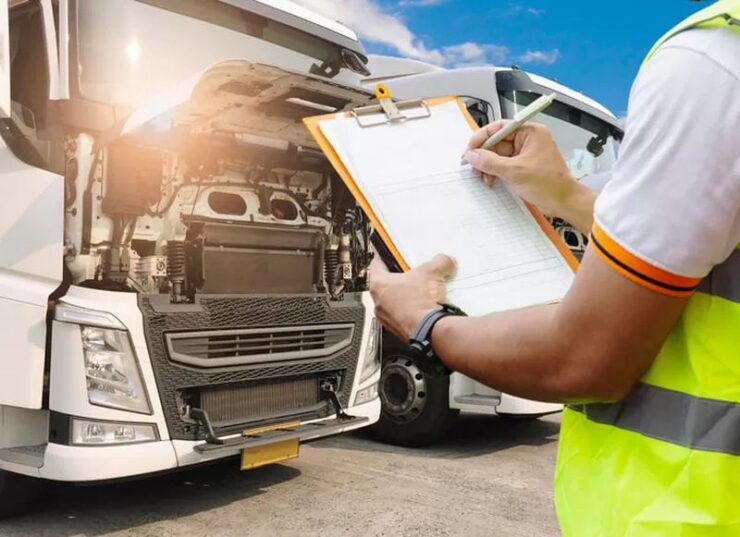Keeping a fleet of heavy vehicles in top shape isn’t just about doing the bare minimum to stay roadworthy. If you wait for things to break before acting, you’re constantly on the back foot.
From transmissions to tyres, every part matters, and small mistakes often become big, expensive problems. Whether you’ve got a few trucks or a full fleet, these tips will help you stay ahead of the curve.
1. Choose Quality Transmissions – And Don’t Delay Repairs

Your transmission isn’t the place to cut corners. It drives everything from performance to reliability, and when it fails, it’s rarely a quick fix.
If you’re running heavy vehicles with automatic gearboxes, using a proven option like an Allison transmission can make a real difference. They’re built for demanding conditions, and when paired with proper servicing, they deliver smoother shifts, better fuel economy, and fewer breakdowns.
But even the best systems wear out if ignored. Watch for early signs like delayed shifting, slipping, or fluid leaks. These aren’t issues to park until the next service — they often lead to much bigger problems if left too long.
And make sure your transmission matches the workload. Overloading a gearbox or using one that isn’t suited to the job will reduce its lifespan and cost you more in the long run.
2. Build a Proper Maintenance Routine (And Stick to It)
If your plan is just to wait until something breaks, expect more downtime and higher repair bills. Preventative maintenance isn’t a buzzword, it’s what keeps your fleet moving.
Every vehicle in your fleet should have its own service schedule, based on hours or kilometres, not just vague timeframes. Include everything from fluids and filters to brake checks, tyre rotations, and electrical systems.
You don’t need complicated systems to track it all, but you do need consistency. Get the schedule sorted, keep it visible, and make sure everyone in the team follows it.
3. Don’t Underestimate the Impact of Driver Behaviour
How your team drives affects how often you’re in the workshop. Poor shifting, hard braking, aggressive cornering… it all adds up. Over time, those habits shorten the lifespan of transmissions, brakes, and suspension parts.
Training shouldn’t stop after the first few weeks. Even experienced drivers pick up bad habits. A quick refresher on smooth operation, reading vehicle feedback, and spotting small issues early can go a long way.
Encourage drivers to report anything unusual. The sooner you hear about that rattle, warning light, or leak, the easier (and cheaper) it’ll be to sort out.
4. Make Pre-Trip Inspections Part of the Routine
It’s easy to skip, especially when people are in a rush. But those daily checks matter. They help you catch things early, before they turn into roadside breakdowns or safety issues.
Lights, tyres, mirrors, hoses, leaks, brakes — even just a quick once-over before hitting the road can flag issues that would otherwise go unnoticed. And post-trip checks matter too. Drivers should be reporting what they’ve noticed, not just what’s gone wrong.
Build it into your process. Keep it simple. And make it clear that inspections aren’t optional.
5. Track It All – Repairs, Inspections, Replacements
If you’re relying on memory, scraps of paper, or random text messages to keep on top of things, you’re probably missing stuff.
Even a basic tracking system can make life easier. At a minimum, keep a record of:
- Scheduled services – including upcoming ones
- Repair history – so you know what’s recurring
- Parts replacements – filters, tyres, brake pads, and so on
- Odometer readings or hours – to track wear properly
- Driver-reported issues – and what was done about them
When everything’s documented, it’s easier to plan ahead, reduce downtime, and catch patterns before they become problems.
6. Tyres Aren’t the Place to Cut Costs

If you’re tempted to go cheap on tyres to save a bit upfront, don’t. They affect more than just grip. Poor-quality tyres increase fuel use, wear unevenly, and can lead to blowouts, especially under heavy loads.
Make sure you’re fitting the right tyre for the vehicle and the job. Monitor pressure, check tread depth, and pay attention to how tyres are wearing. If you’re seeing uneven wear, there might be an alignment or suspension issue that needs sorting.
Rotate tyres as recommended, and replace them before they become a risk. They’re one of the easiest parts of the vehicle to maintain, and one of the most important for safety.
7. Work With Mechanics You Can Rely On
Whether you’ve got an in-house team or use a workshop, having the right people looking after your fleet makes everything easier.
A good mechanic doesn’t just fix problems; they notice things before they become problems. They understand your vehicles, give clear advice, and don’t just patch things up to get you out the door.
Don’t shop around for the cheapest fix every time something breaks. Build a relationship with someone you trust. It’ll save you time, money, and a lot of headaches.
Long-Term Wins Start With the Basics

The best fleets aren’t run on luck. They’re run on consistency. On systems that work. On spotting problems early and acting fast.
If there’s one thing to take from all this, it’s that every part of your vehicle, from the transmission to the tyres, relies on attention. Leave one area unchecked for too long, and you’ll feel it across the whole operation.
Start with quality parts. Stick to your schedules. Train your drivers. And above all, treat maintenance like the priority it is, not just something you get around to when there’s time.

